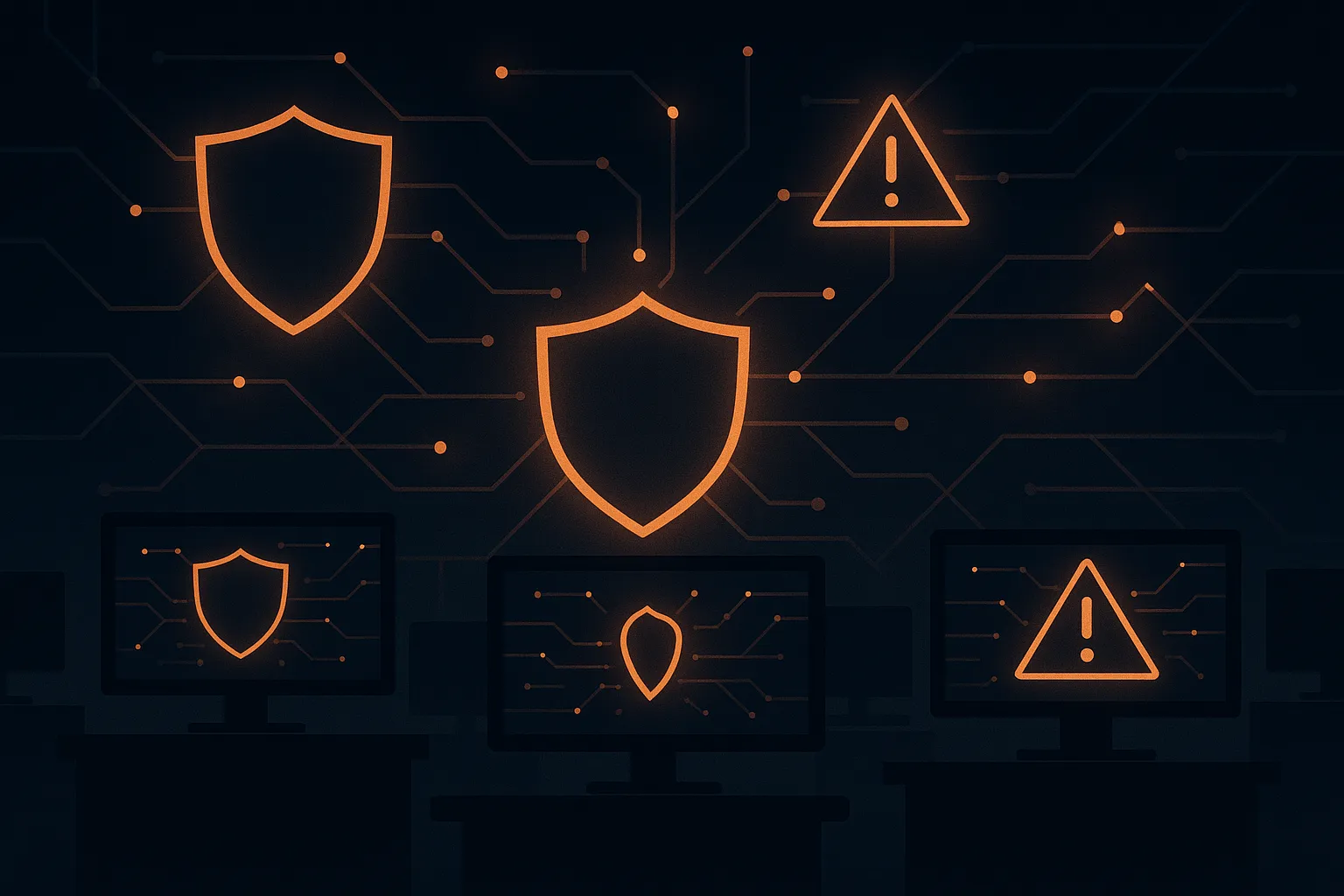Think about this: It's a normal Monday, and your startup is doing great. You're getting a lot of leads, your team is doing great, and your online presence is stronger than ever. Then, you get an email that makes your heart race: "Your data has been compromised." People start to panic. Your website is down, your customers don't trust you anymore, and you're in a panic. I've been there, staring at a screen, heart racing, and not knowing how to get better. A cyber attack feels personal to a business owner because it threatens everything you've worked for. But here's the truth: you can turn chaos into control with a good cybersecurity incident response plan.
According to IBM's most recent report, cyber threats like ransomware and phishing are changing faster than ever in 2025, and attacks cost businesses an average of $4.45 million. A single event can stop revenue growth or lead generation for startups and small businesses. This guide, written by BYBOWU, an expert in making modern web and mobile apps, will show you how to make a cybersecurity incident response plan that includes detection, response, and recovery. This will help you keep your business safe and come back stronger. Let's get started.
Why Your Business Needs a Cybersecurity Incident Response Plan in 2025
Let's be honest: No one likes to think about what could go wrong. But ignoring the growing number of cyber threats is like ignoring a warning of a storm. Cyberattacks will not only happen more often in 2025, but they will also be smarter. According to the U.S. National Cybersecurity Alliance, AI-driven phishing scams and automated ransomware are going after businesses of all sizes. In fact, 60% of small businesses go out of business within six months of a major breach. What does this matter? If you don't have a plan for a cyber attack, you could lose more than just time; you could also lose your reputation, money, and customer trust.
As the owner of a startup, I know how heavy those stakes are. A client once lost 30% of their leads overnight because of a breach that could have been avoided. What did you learn? Everything depends on being ready. A cybersecurity incident response plan is more than just a list of things to do; it's a guide for how to stay calm, organized, and proactive when the worst happens. It's about making sure your business keeps running and letting your customers know you have their back.

Step 1: Getting ready—laying the groundwork for your cyber attack plan
The best way to protect yourself is to be ready before an attack. Setting up teams, tools, and processes to limit damage is what preparation is all about. Start by figuring out what your most important assets are, like your website, customer data, or payment systems, and then look at how vulnerable they are. We offer tools like vulnerability scanners and penetration testing that can find weak spots in your Next.js or Laravel-based platforms.
Next, put together a team to respond to the incident. You don't need a huge team for this; just give people jobs like incident coordinator, IT lead, and communications manager. Do tabletop exercises with them on a regular basis to mimic breaches. Finally, write down your plan. Include lists of people to contact, steps to take if something goes wrong, and backup plans. During a ransomware attack, one of our clients was able to avoid losing $50,000 by having backups ready. That's what being ready can do.
Step 2: Finding and Analyzing—Finding Threats Early
Have you ever wondered how some businesses stop attacks before they get out of hand? Finding things is what it's all about. AI cybersecurity tools will be game-changers in 2025. They will look at traffic patterns and flag things that don't seem right, like sudden spikes or attempts to access data without permission. CrowdStrike and Splunk are examples of solutions that can be added to our AI-powered solutions at BYBOWU to cut detection time from days to minutes.
Use intrusion detection systems (IDS) and log management tools to keep an eye on things in real time. Set up alerts for strange behavior, such as many failed logins or data transfers that don't seem normal. We put monitoring APIs into one of our React Native apps that stopped a phishing attempt before it could reach users. Early detection isn't just about knowing how to use technology; it's also about knowing your business well enough to know when something isn't right.

Step 3: Containment—Stopping a cyber incident from spreading
After you find a threat, the next step is to contain it. It's like putting out a small fire before it spreads to your house. To contain something in the short term, you might need to isolate affected servers or block bad IPs. To keep the problem from happening again in the long term, use patches or update firewalls. Cloudflare says that a Web Application Firewall (WAF), like the ones we set up for clients, can stop 90% of attacks at the application layer.
This is where feelings are very strong. I've seen founders freeze up, not sure if they should shut down systems or keep things running. A clear cyber attack plan takes the guesswork out of things. It should include when to go offline, who to tell, and how to keep evidence for forensic analysis. Our team at BYBOWU has helped clients stop breaches within hours, saving their online presence and customer trust.
Step 4: Getting Back to Business After Getting Rid of It
Eradication means getting rid of the source, which could be malware, exploited vulnerabilities, or stolen credentials. Clean your systems with antivirus scans, patch management, and resetting passwords. Recovery is about getting things back to normal in a safe way. Before redeploying, test backups and keep a close eye on systems for any threats that might still be there. Gartner says that automated recovery tools, which are part of our AI-driven solutions, can cut downtime by 40% in 2025.
When their sites are back up, I've seen clients breathe a sigh of relief, but recovery isn't just technical; it's also emotional. Tell customers clearly what happened and how you've made security better to put their minds at ease. This builds trust and makes a crisis a chance to show how strong you are. Take a look at our portfolio to see how we've helped businesses get back on their feet after cyber attacks.
Step 5: Analyzing what happened and making things better
It's easy to want to move on and forget once the dust has settled. But growth happens after the incident analysis. Look over what went wrong, what worked, and how to make things better. Add what you learned from the incident to your response plan, and teach your team how to deal with threats better in the future. With our help, one of our clients cut down on repeat incidents by 70% after doing post-breach audits.
This step also makes your plan for keeping your business running stronger. Write down what you find, share it with everyone who needs to know, and keep training. Check out our services to find out how BYBOWU's AI-powered tools can help you improve your cybersecurity plan for 2025 and beyond.
Why should you work with BYBOWU for cybersecurity in 2025?
We understand that running a business is hard enough without having to worry about cyber threats at BYBOWU. Our team in the US specializes in building secure, scalable web and mobile apps using Next.js, React Native, and Laravel. We include cybersecurity incident response in all of our projects, from AI-driven monitoring to strong recovery plans, to make sure your business stays healthy.
Putting security first has helped our clients get more leads and make more money. Are you ready to get ready for cyber attacks? To get started, email us at [email protected] or go to our contact page.
Take Charge of Your Cybersecurity Right Now
In 2025, cyberattacks aren't a question of "if" but "when." But with a cybersecurity incident response plan, you're not just reacting; you're in charge. Every step you take, from finding the problem to fixing it, protects your leads, revenue, and reputation. I know how good it feels to be ready as a fellow business owner. Act before a breach happens.
Get ready for cyber events. Get in touch with us for a free consultation! If you want to talk, send an email to [email protected] and let's work together to protect your digital future.





Comments
Be the first to comment.